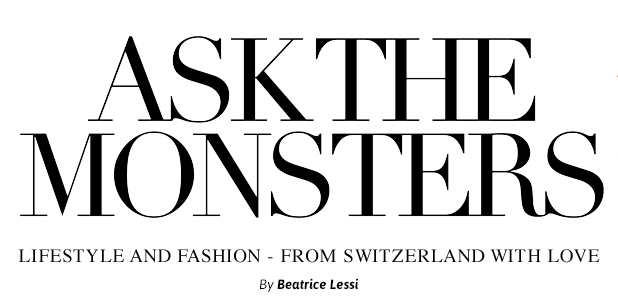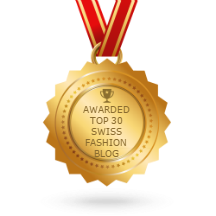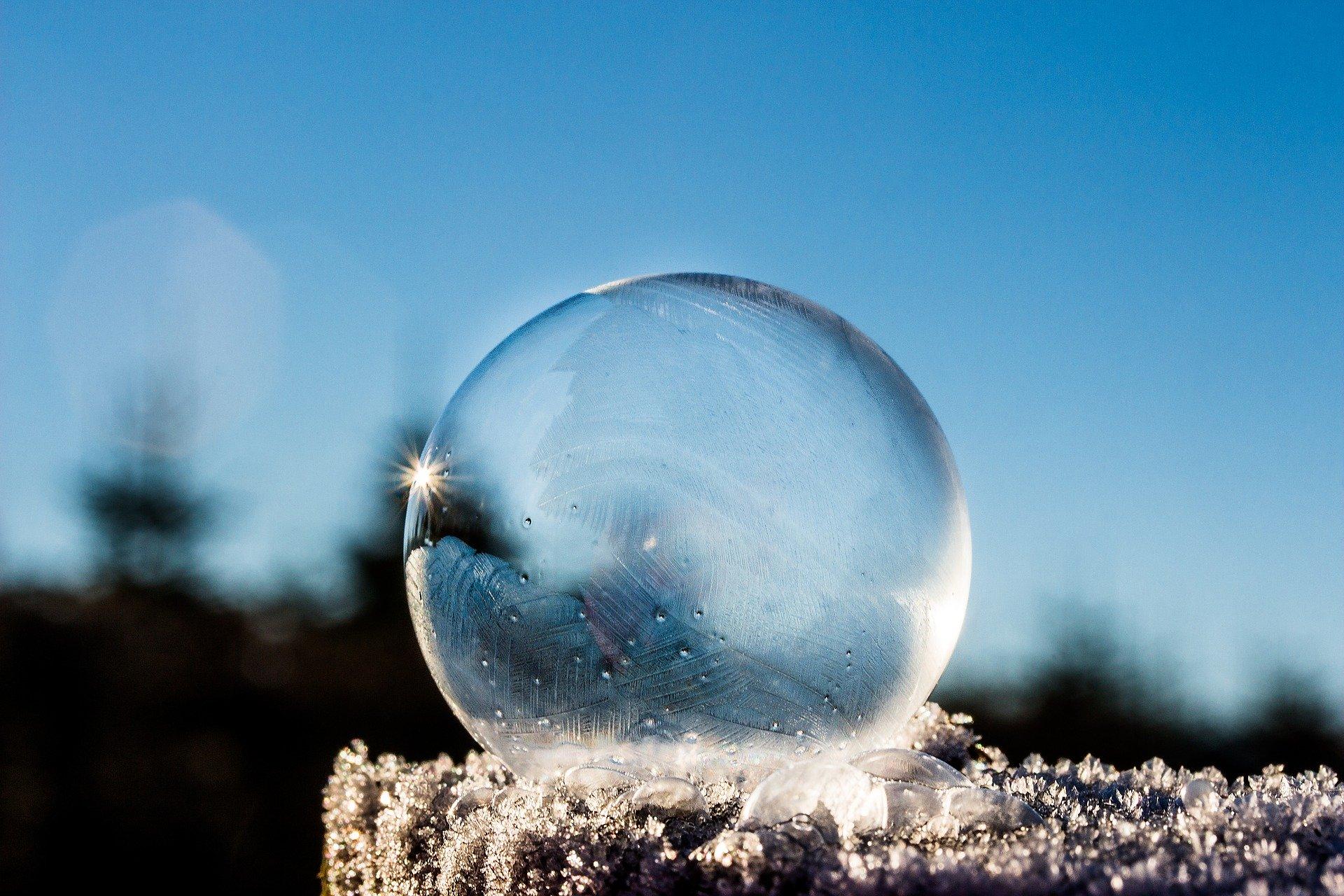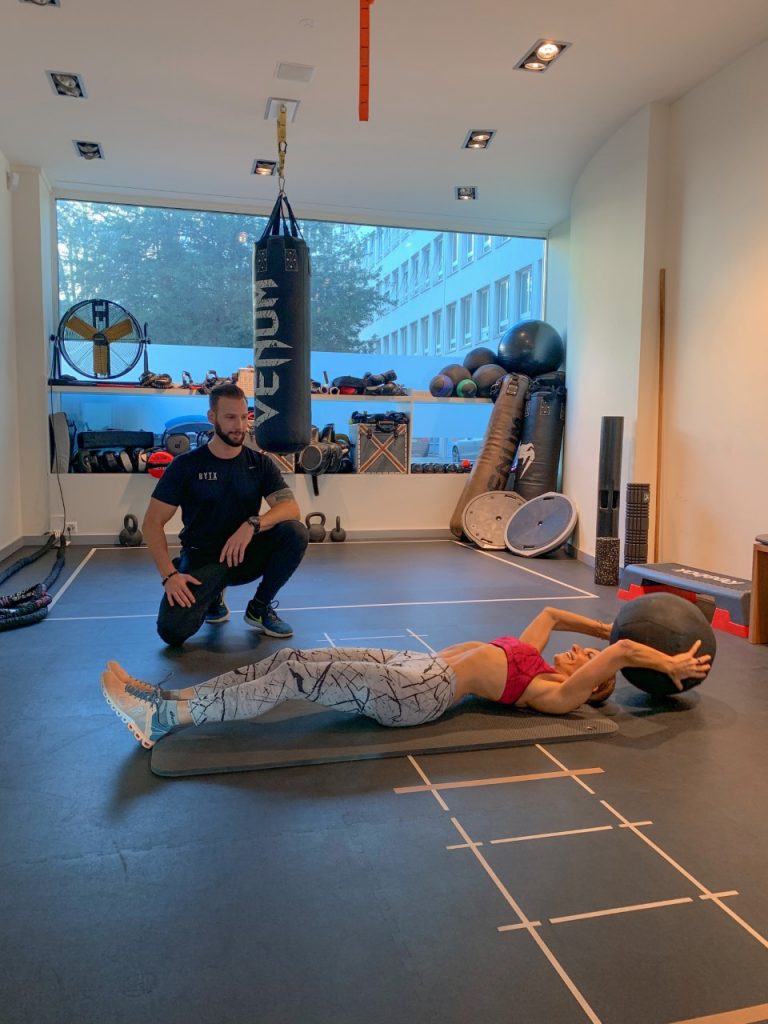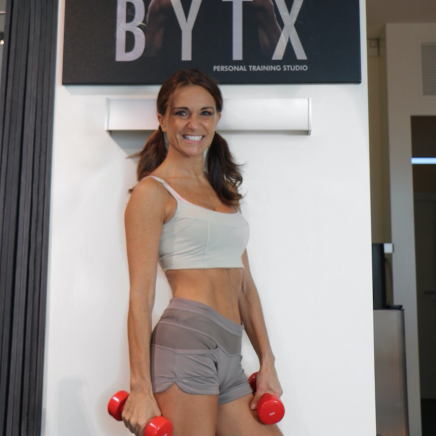How to Fight Off Winter Blues
Effective Tips against Seasonal Affective Disorder
Do you also feel bad when it’s cold and grey outside, and you can’t help it?
I asked Lucien Tasovac – my personal trainer, who is helping me to prepare for my next ultra marathon – some tips against mood swings and low energy days, that happen to me especially in winter.
SEASONAL AFFECTIVE DISORDER: HOW DO WE STAY STRONG AND FIGHT OFF THE WINTER BLUES?
By Lucien Tasovac.
Have you ever noticed that you can become a slightly different person during these months? Maybe the symptoms are mild such as a bit of lethargy, and maybe the symptoms can be quite severe, developing up to full blown depression and everything that comes with it. Or somewhere in between on this spectrum?
This phenomenon is called Seasonal Affective Disorder (SAD), otherwise known as the ‘Winter Blues’. Seasonal Affective Disorder is real and has real causes. Light plays a central role, both as a regulator of our circadian rhythm and also as a provider of the all-important Vitamin D. Given this, it is no coincidence that Seasonal Affective Disorder comes with the shortening of the days during the Winter months.
In this article we will look at Seasonal Affective Disorder, our circadian rhythm, the effects of different types of light on our biology, the negative effects of the modern working environment, Vitamin D, and how to intelligently use nature and technology to stay in optimal health during the darker Winter months.
Disclaimer: the author is independent and has no affiliation with any of the products or companies mentioned within this article. They are mentioned as examples which are available to assist the reader, and suggested as possible tools at the reader’s disposal.
What is Seasonal Affective Disorder?
Seasonal Affective Disorder usually begins into Autumn, continues through the Winter months and finishes as we head into Spring. Some people are more susceptible than others, such as people with darker skin. Symptoms include low energy, changes in appetite, having trouble concentrating, feeling agitated, problems with sleep and a loss of interest in your usual activities. More severe symptoms include consistently feeling depressed most of the day, feeling hopeless, and even thoughts of death or suicide. You will notice an increase incidence of suicide during the Winter.
Most people will accept these symptoms as a part of life, that come around once a year and which just need to be toughed out. However, if we understand what is actually happening within our bodies and why, then we don’t have to merely tolerate these effects, rather we can take measures to actively combat them.
Seeing the Light for Our Circadian Rhythm
Humans, like other diurnal (non-nocturnal) animals, are supposed to wake with the Sun and sleep with the stars. This is our natural timing, our body clock, or our circadian rhythm.
This natural rhythm can be easily altered by our environment, such as artificial lighting, and our lifestyle choices, such as the use of electronic devices or when we choose to go to bed.
A disrupted circadian rhythm can affect your eating patterns, disrupt your hormones, and lead to a number of negative health consequences. For example, studies have shown that there is a link between increase incidences of cancer and shift work, especially where night shift is involved. Consequently, the more in-sync we are to our natural circadian rhythm, the better our lives become.
Blue light from full-spectrum sunlight is the most powerful regulator of our circadian rhythm. You should expose yourself to blue light within 5-10 minutes of waking up using natural sunlight. Later in this article we will look at various biohacking options to simulate the Sun if sunlight is not available, such as during the Winter months.
The presence or absence of natural light will dictate and initiate biological functions within our bodies. Your circadian rhythm starts in the morning when light first enters your eyes (ideally from the sun, not your phone), signaling to your body that the day is beginning. When we are in the darker months, the sun does not rise until 07:30. This is why you are feeling tired and sluggish until mid-morning. Your body still thinks it’s night-time and is confused as to why you are awake.
An extreme example of this can be seen in an experiment conducted in the 1960s with cave explorers Josie Laures and Antoine Senni, who lived underground for months. They stayed in separate cave systems, thinking that much less time had passed, weeks instead of months.
What’s more, Senni would sometimes sleep for stretches of 30 hours at a time, then wake up believing he’d just had a short nap.
Of course, isolation and not having much to do played a part in this dramatic increase of the sleep cycle, but the total absence of natural light had a huge impact on the circadian rhythm of Laures and Senni.
So, sunlight is important with relation to combating Seasonal Affective Disorder, then let’s look at how sunlight affects our body so we can use it to our advantage.
Fun Facts on Sunlight
In the morning there is no ultra-violet (UV) light when the sun is low on the horizon because, due to the sun’s angle in relation to the Earth and you, it has to pass through more atmosphere before it reaches your eyes. There is an equal colour balance of blue, red and green in natural light. The red light is good for you as it turns your pituitary gland on and releases hormones.
You can indirectly look at the morning Sun for a few seconds when it is low on the horizon, in order to maximise the benefits of using natural light to start your circadian rhythm. Otherwise just refrain from wearing sunglasses during sunny mornings. The health benefits do outweigh the fashion points.
At around 9:00 or 10:00 in the morning is when the UV light comes through from the Sun. UVA comes through first and it only penetrates the first 10 mm of our skin. It draws red blood cells to surface, as these cells are attracted to light. The effect of UVA on our hormones are limited after 10:00 or 11:00 in the morning, which is one of the reasons why it takes us longer to wake up if we get out of bed in the afternoon.
UVB light comes through next after this time and turns on Vitamin D3 production in our bodies. But where are most people during this time of day? Inside their office and not outside. This is one example of how our daily jobs are blocking our natural circadian rhythm as dictated by natural light.
Getting the Day Off to a Good Start
You will not truly start to feel awake until you see sunlight with your own eyes, but here lies the problem: The Sun is usually hidden by an overcast sky during the colder months, sometimes for weeks at a time. Coffee is not the answer. These days we have some technological solutions to help get that light into our bodies.
Products like the Ayo Light Therapy Glasses use blue light to shine into your eyes, stimulating photo-sensitive receptors. These receptors then send signals to the brain, suppressing melatonin (the sleeping hormone), and waking you up. You can wear them for 20 minutes, within two hours of getting out of bed.
The HumanCharger by Valkee uses a different technique: blue-light-emitting earbuds. Photo-sensitive receptors on the brain can be accessed by light flowing through the ear canal and ear structure. As a result, according to Valkee, you experience an improved mood, and increased mental alertness. An ideal way to combat Seasonal Affective Disorder during those dark mornings. You can put them in for 12 minutes during your morning routine or during your commute to work. People will just think you’re listening to music on your retro MP3 player.
Artificial blue light can be an effective tool for combating Seasonal Affective Disorder, but it should be used strategically and sparingly. Why? You’re probably already getting too much of it.
Too Much Blue Light Is Unhealthy
We’ve seen how natural blue light plays an important role in regulating our circadian rhythm but, because of the modern office working environment and proliferation of electronic devices, we tend to get too much artificial blue light, which is not good either.
Artificial blue light increases reactive oxygen species within the body, that is inflammation, which is a precursor to a host of diseases. Specifically, blue light increases inflammation and protons within the brain, which can lead to adrenal fatigue. Ever feel totally drained after staring at a computer screen, smart phone or TV for too long?
How Exactly is Blue Light Bad? Let’s Get Technical
Our bodies are essentially made of proteins. All proteins have aromatic (type of chemical bond structure) amino acids, and all aromatic amino acids absorb UV light. Peptide bonds, which link the amino acids, absorb UV light, and fluorophores (a fluorescent chemical compound that can re-emit light upon light excitation) in protein absorb purple light.
On the inter-mitochondrial membrane there are proteins called cytochromes. The closer the cytochromes get together the better electrons can tunnel, which means the more net negative charge there is in the cell in order to capture sunlight. This is a good thing because this leads to the creation of more adenosine triphosphate(ATP), or cellular energy.
Blue light does the opposite. It spreads the cytochromes apart, increasing the atomic distance between them and reducing ATP. A one-angstrom change in atomic distance reduces quantum tunneling by a factor of ten, so when you live in artificial blue light all the time (eg. LED) then this becomes a problem. Light from Light Emitting Diodes (LED) subtracts out all purple and red light from the spectrum. The problem with this is there are LEDs everywhere and this is the part of the spectrum that humans need to work the most.
Dr Jack Kruse, a neurosurgeon from the United States, talked about this during a podcast interview. He states:
“LED is an alien blue sun to our brain. It sacrifices time in our life and reduces our lifespan.
Just because we are saving energy, does not mean we are saving our health.”
How can we combat the effects of excessive artificial blue light? Consider wearing blue-light-filtering glasses such as glasses with purple lenses, which block blue light. Download blue-light-filtering apps for your electronic devices to use during your workday and especially at night. Blue light destroys ocular melatonin, delaying your natural impulse to sleep when it gets dark. Using orange lenses after dark can also help to preserve melatonin and give you a better sleep. The fastest way to ruin the timing mechanism in your eyes at night is artificial blue light!
We can also balance the effects of excessive blue light by exposing ourselves to red light.
Healing in Red Light
We are always in blue light thanks to our modern environment, so we need red light to balance the effects. Red light is the antidote to blue: shrinking proteins, increasing electron tunneling and increasing ATP within our bodies. Red light does this by activating cytochrome C, which is related to hemoglobin, making it more energy efficient.
The people at Vielight use a method called photobiomodulation therapy, and have come up with a device to deliver this therapy.
“Photobiomodulation therapy is the utilization of non-ionizing electromagnetic energy to trigger photochemical changes within cellular structures that are receptive to photons.”
It is the mechanism which was discussed above involving the cytochromes.
“The process creates mild oxidants, which leads to gene transcription and then to cellular repair and healing. ATP production increases as a consequence of the metabolic action of near-infrared light.”
The Vielight device delivers red light to your body via intranasal therapy, that is, accessing and stimulating photosensitive receptors on your brain by shining a red light up your nose. It can also deliver the red light via transcranial stimulation through a device placed upon your head. Not quite as cool to wear in public, so I’d save this one for use at home.
The effects of the Vielight depend upon the configuration of the device, and what frequency is used. Outcomes range from affecting Alpha and Gamma pulse rates within the brain (associated with sleep and meditation), improving memory and increasing focus, leading to stress reduction and increased mindfulness. Considering this, the benefits of the Vielight could be harnessed whilst meditating, enhancing the beneficial effects on the brain.
Dr Kruse advises to use caution with the intranasal configuration of the Vielight if you have had some sort of nasal surgery, such as for plastic surgery or for a deviated septum. If red light is used directly on scar tissue, then it can make it worse.
“Live in morning light, sleep in the dark, heal in the red. Repeat.”
-Dr Jack Kruse
Now that we have looked at using blue light to combat Seasonal Affective Disorder, and the use of red light to balance the effects of excessive blue, let’s look at Vitamin D deficiency as a factor of Seasonal Affective Disorder.
Vitamin D From Food v Sunlight
There are two main kinds of Vitamin D—Vitamin D2, which you can get from (and occurs naturally in) certain foods like salmon, tuna, mackerel, beef liver, and egg yolks, and Vitamin D3, which you can only get from UVB radiation.
When exposed to the Sun, your skin can manufacture its own Vitamin D. We each have Vitamin D receptor cells that, through a chain of reactions starting with conversion of cholesterol in the skin, produce Vitamin D3 when they’re exposed to UVB from the Sun, which is the strongest sunlight.
Another avenue to get Vitamin D is by taking supplements. These come in both pill and liquid form. They are generally recommended for people with fat absorption issues, lactose intolerance, milk allergies, as well as for people with darker skin tones or with certain medical conditions that prevent them from going outdoors. It is not so good for dark-skinned people to live in low-light environments, as it lowers dopamine levels within the brain and can set you up for diseases.
Some people have concerns about Sun exposure, or absorbing the chemicals contained in Sun cream thorough their skin, but there is a way around this. For example, in Australia during the Summer where the Sun is particularly harsh, it is wise to go to the beach in the morning until about 9:00 and again in the late afternoon from about 17:00. In this way you get to enjoy being out in the Sun, receiving all the benefits without having to put Sun cream onto your skin. Sunlight is indeed good for you but, as with any medicine, there is a point where the dosage becomes toxic.
So, make sure you keep up your Vitamin D levels throughout Winter by exposing yourself to the Sun at every opportunity and taking Vitamin D supplements. A lack of Vitamin D is a factor in Seasonal Affective Disorder, so do pay attention when your body speaks to you.
A Personal Anecdote on Seasonal Affective Disorder and Vitamin D
A few years ago, I noticed that I was feeling consistently ‘bad’ and was confused as to why. It was March and I had low energy, was lethargic and felt generally ‘off’, in a ‘hard-to-put-your-finger-on-it’ sort of way. I was exercising regularly, eating well, getting enough sleep, had no extraordinary stress and was even supplementing with oil-based Vitamin D throughout the Winter. Still, I could feel that something was not right. Finally, in desperation, I intuitively decided to visit a solarium and use a sun bed.
At the solarium, I looked for the sun bed with the weakest lamps, purchased eight minutes of usage time, and put the sun bed on the lowest intensity setting. The effect was immediate and incredible! I walked out of the solarium feeling 50% better. The next morning, I woke up feeling another 50% better still.
To me it was very obvious and undeniable that although I had been supplementing with Vitamin D, it was insufficient and I had still been suffering the effects of a lack of Vitamin D3, which can only be received from the Sun. The moral of the story: supplementation with Vitamin D is not enough to stave off Seasonal Affective Disorder. The Sun (UVB radiation), or a substitute, is required to complete the picture.
A lack of sufficient or timely exposure to light will short circuit every attempt you make in the morning to get your
Don’t Hide From Nature, and Move
As tempting as it is, do not hide indoors during the cold, dark months of Winter and severe your connection with Nature. Put some layers on, grab an umbrella, take a thermos of hot tea and go for a walk in your local forest, park or beach.
Take the time to notice which plants and trees are sleeping, and which are still awake. What animals can you see and hear? What does the air smell like? Really notice your surroundings and get a feel for the season when you are not surrounded by buildings, concrete and the sounds of traffic. If you’re lucky enough to live near some mountains, then enjoy some winter sports above the level of the fog and get that sweet sunshine.
Use exercise and physical activity in those dark mornings to kick-start your circadian rhythm. Go for a run, go to the gym or, failing that, do a simple body-weight exercise routine at home to increase your heart rate and get the hormones flowing. Personally, I like to do 20 burpees in the morning, after getting out of bed and drinking a glass of water.
Getting outside into nature, exercising and being mindful of your surroundings is one of the best antidotes to most things, including Seasonal Affective Disorder!
The Take-Aways
Seasonal Affective Disorder is a collection of symptoms which are associated with the reduction of natural light during the colder, darker months of the year. The symptoms are on a spectrum that range from feelings of lethargy, up to thoughts of suicide.
The best way of combatting the symptoms of Seasonal Affective Disorder is to expose your eyes and body to natural sunlight, in order to keep your circadian rhythm in time and for the production of Vitamin D3.
When natural sunlight is not available then you have some biohacking options to consider in order to get blue light into your eyes (or ears!), and get your circadian rhythm started in those dark mornings. Supplement with Vitamin D as well to ensure you are maintaining your levels throughout the Winter.
Although artificial blue light is a useful tool when fighting Seasonal Affective Disorder, we do tend to get too much of it in our modern working environments, so be aware of its sources and take steps to avoid the effects of excessive artificial blue light. Certain glasses and apps can block blue light, and biohacking devices which emit red light can help to balance the effects of blue light.
Stay active during the Winter by exercising vigorously and getting outdoors. This combined with mindfulness practices will help to release feel-good chemicals such as dopamine and keep you out of reach from those Winter Blues.
Seasonal Affective Disorder is real, but you can fight it!
